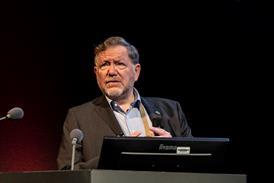Craft Leaders: Douglas Trumbull, Special Effects Supervisor

The VFX wizard behind movies like 2001: A Space Odyssey and Blade Runner, Douglas Trumbull has spent the last decade developing Magi, which can capture and show films at high resolution and high frame rates – and deliver the immersive experience he says cinema audiences are looking for.
“I think I’ve cracked the code for the next step in cinema,” Douglas Trumbull says. “When you see the movies that I am doing you will see the closest thing to a living hologram. The surface of the screen virtually vanishes so you’re looking into a volumetric space. I’ve been trialling and testing this for ten years and I know it works. Now I’m trying to get the attention of people in the industry and show them the next big leap for cinema.”
From anyone else this may seem like so much fanciful thinking but Trumbull is a visionary who has already seen, invented and built the future of cinema several times over.
He is the visual effects wizard behind three of the most influential science-fiction movies of all time: 2001: A Space Odyssey (1968), Close Encounters of the Third Kind (1977) and Blade Runner (1982).
He is the inventor of Showscan a hypervivid film process that showcased the startling impact of high frame rates four decades before Peter Jackson brought it into fashion with The Hobbit. After merging his company with a division of IMAX in 1994 he took the company public in a move that brought the giant screen format from niche to mainstream; and in 1972 he directed Silent Running with an ecological disaster theme which seems more prescient with each year.
Yet it is a fascination with the challenges of making and displaying movies using advanced production technologies, to which the 76-year old has devoted most of his career.
“TV is saturated with…
Read the full article

Sign up to IBC365 for free
Sign up for FREE access to the latest industry trends, videos, thought leadership articles, executive interviews, behind the scenes exclusives and more!
Already have a login? SIGN IN




















